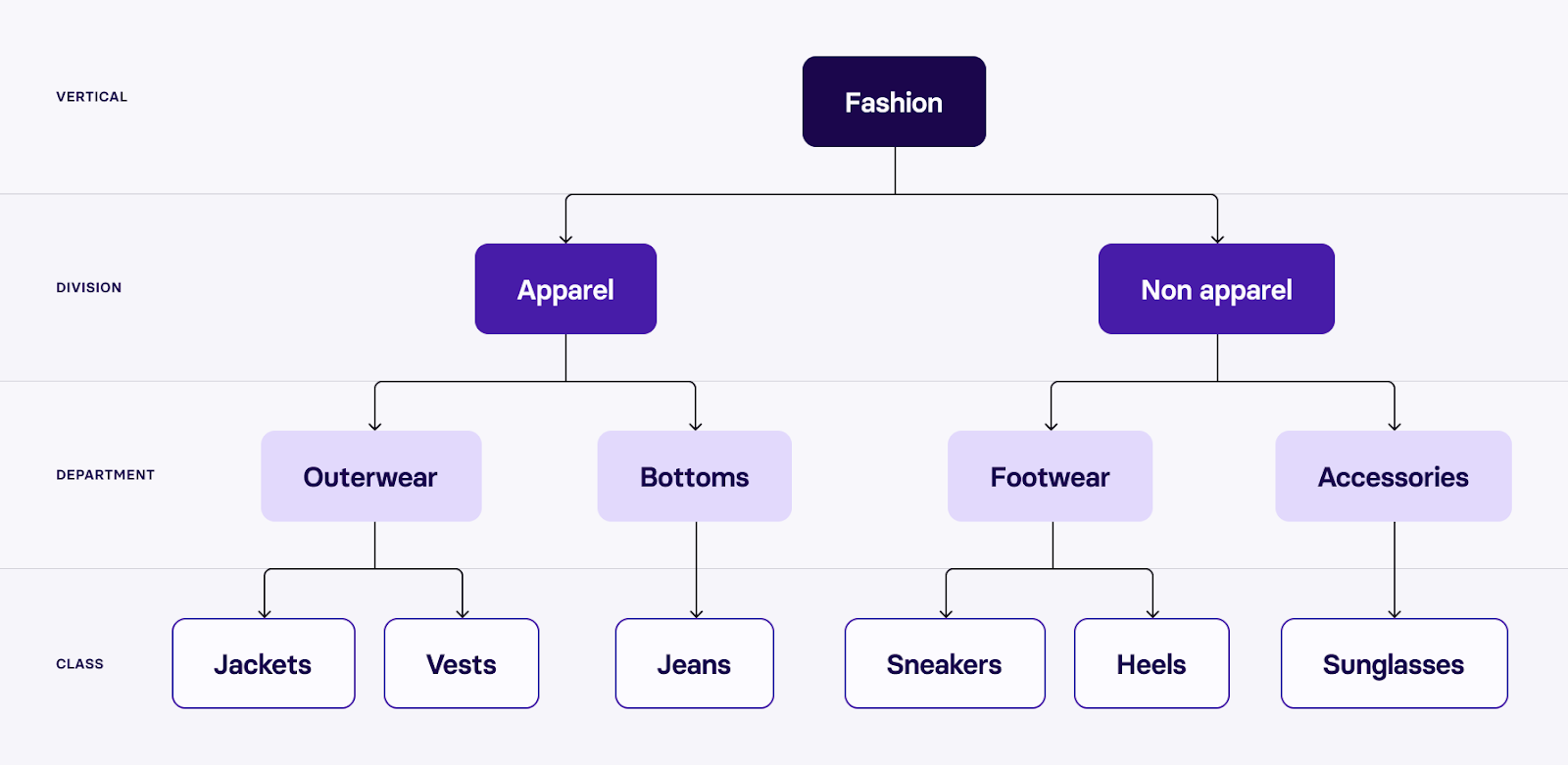7 Best Practices for Creating a Product Taxonomy
A well-constructed product taxonomy provides lasting benefit to both your customers and your business. Understand these 7 tips to optimise your own product hierarchy.

A comprehensive product taxonomy is critical to your success as an organization — if you're not sure why, check out our post Product taxonomy: Improve sales with effective categorization. But knowing that, how can you make sure your taxonomy is up to the task?
A key thing to note is that good taxonomies consider a given customer's environment. Product classification needs to be influenced by customer behavior, trends, competitors, and more. Follow the 7 best practices outlined below to ensure you end up with a quality product taxonomy.
1. Research the competition
It’s essential to understand how the best-in-class merchants in the market you’re targeting classify their products. Customers prefer your site to work the same way as the other sites they frequent. Since there is no standardization of product taxonomy, each business will have its own approach. Optimize for the best combination of category options from your competitive set. We use analysis from Baymard Institute when assessing for opportunities that we can address in our own product taxonomy.
2. Understand your product offering
When considering a product purchase, most customers compare alternative products with different attribute combinations. Use your knowledge of what product features are important to your customers to build out your category and attribute framework. Within our Makeup category, for example, we feature a Skin Complexion attribute to help customers seek out makeup products that complement their skin tone.
3. Avoid over-categorization
An understandable category tree features a hierarchy depth of 3 to 5 levels, and no more than 15 options at the lowest level of the hierarchy. If a customer spends too much time clicking into levels and sub-levels before seeing actual products, you have too many.
If you have a large product catalog, use product attributes and filters to your advantage. Categories help customers find products through navigation or search. Attributes further narrow down the number of options using product descriptors and details.
4. Don’t confuse categories and attributes
Categories are groupings that help to define products, while attributes are elements that describe products. If you can use the qualifier on other categories (for example, ‘red’, or ‘cotton’), it should be defined as an attribute.
5. Name your categories and attributes appropriately
Put yourself in your customers’ shoes and try to keep your language simple, straightforward, and distinct across different values and levels. Refrain from using “Other” as a category or attribute, as this word choice comes off as too vague.
6. Don’t place a product in more than one category
A product can’t be in more than one category in an internal category tree because it creates errors with product reporting. However, exposing the same product in several categories on a website can help drive additional sales.
Consider the example of a hiking backpack—this item could be displayed under both Bags and Sports Equipment. Internally, this item would be classified under Bags only.
7. Test, test, test
Analyze the way your customers shop and navigate through your product taxonomy. Are your categories and attributes relevant to your customer base? Are you hitting on the right search terms and keywords? Are there bottlenecks in your customer journey?
Remember, if customers cannot find what they want, they will leave the page. We recommend using Optimal Workshop’s tree testing software to validate your category tree.
Once your taxonomy is done, keep working on it
The best product taxonomies are not set in stone. They are continually being tested and updated. New products are constantly being added to the retail landscape, which requires the creation of new categories and attributes.
There are no strict rules for product taxonomy. However, it’s important to remember both the needs of your customers and your business to guarantee a dynamic and understandable categorization system.

